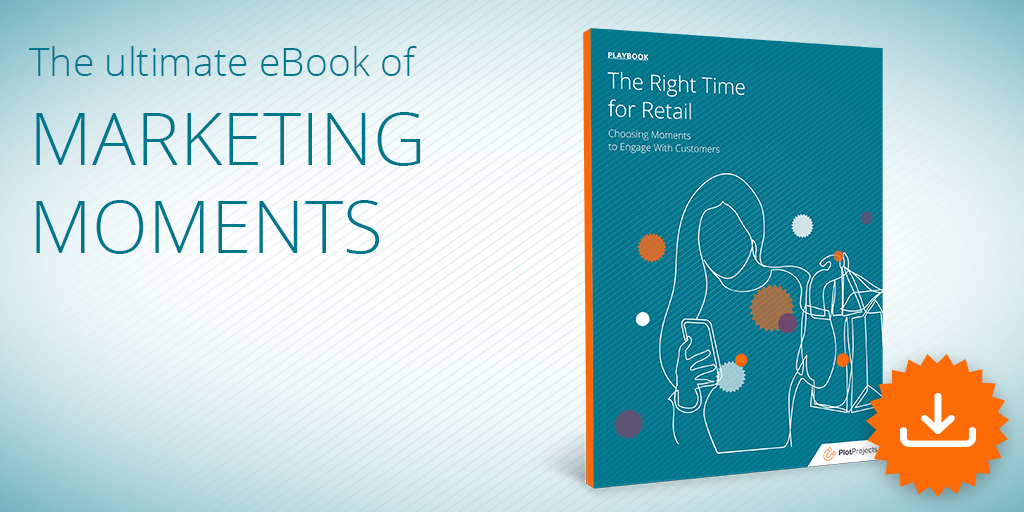In the heart of London on Wednesday 3rd October, Covent Garden’s beautiful Hospital Club was home to a hive mind of customer experience changemakers, sipping cocktails and sharing ideas.
Leanplum and Plot Projects hosted an evening of inspiring conversations about where mobile is going – and what that means for you and your company.
We were lucky enough to have the likes of Forrester’s Thomas Husson kicking off the event with a glimpse at what the near future of mobile customer engagement will look like. Then, a panel of experts turned this topic into a conversation: the panel included Ed Turner at language app Lingvist, Hatch Entertainment’s Lassi Nummi, Coinbase’s Joseph-Daniel Millwood, and Mark Andres at Vouchercloud (recently under parent company Groupon).
Here’s a quick breakdown of what we learned.
1. ‘Mobile-first is no longer enough’ – Thomas Husson, Forrester
It’s been the ‘year of mobile’ for the past decade: now it’s time to finally level up responsive interface design, and conquer responsive customer experiences.
This means we need to start thinking – and doing – in dimensions of personalization beyond what our customers see within their screens. To stay ahead means switching out dynamic digital experiences, for journeys on and offline which move with customer context; from passing by a store to traveling to and from work.
2. ‘The next 4 years of MarTech will converge around the ‘customer moment’ – Thomas Husson
And the tech stack of the future will unfold as in one of Forrester’s famously satisfying Venn diagrams, which we’re not able to reproduce but which you can find in the Top Emerging Technologies for B2C Marketers Forrester report.
3. ‘Catching the right moment for customers increases conversions’ – Mark Andres, Vouchercloud
Already, companies like Vouchercloud are using moment marketing technology to better understand customer context and seeing increased conversion by avoiding mass push fatigue.
Learn how they do it here.
4. ‘Voice will become the new interface’ – Thomas Husson, Forrester
It’s happening already. As the most natural form of interaction for humans, we’re not only moving back to delivering experiences for ‘real world’ movements but real-world modes of communication too. It’s up to companies to understand behaviors within this new frontier of voice command and assistance – so they can fit naturally with a customer’s intentions and environment.
5. ‘Minimize communication, to maximize effectiveness’ – Joseph-Daniel Millwood, Coinbase
A wild ride over the past months has meant that Coinbase’s marketing team learned a valuable lesson in the sequencing and frequency of messages sent via mobile. By sending fewer notifications to users and carefully considering each interaction, they reduced waste – and churn.
6. ‘Don’t be afraid to re-think customer journey cycles’ – Ed Turner, Lingvist
It’s no surprise that every experience is different, and Ed’s approach is to design meaningful user engagement for their context: for this language app, this meant switching a mainstream ‘Pay Per Click’ metric and mindset, for a more specific ‘Pay Per Emptied Card Deck,’ which makes more sense for the value they present to customers.
7. ‘Mine for undiscovered customer moments’ – Lassi Nummi, Hatch
In this new dimension of customer moments and context, making assumptions is a dangerous game – and so is sticking to what you know without exploring new frontiers. In his pursuit to better understand customer moments, Lassi found that in this cloud gaming environment, a player’s friend getting ahead of them on the scoreboard became a crucial trigger for them to continue playing.
8. ‘If a customer has to open the app, we have failed’ – Chris Hull Life360
‘… We have failed to anticipate the need of the customer, and provide them with information proactively’.
This proactive communication will be effective not only based on what’s in a customer’s online shopping cart, or derived from their browsing behavior, but in their offline habits. Where have they been, and where are they headed next? And what does this mean for you, in terms of adding value for them?
Want to learn more about how you can seize customer moments to deliver superior experiences? Get the guide:

